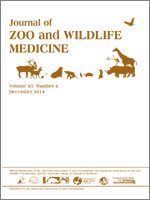Free-flying turkey vultures (Cathartes aura) were sampled in California to investigate the fecal shedding prevalence and antimicrobial susceptibility of Salmonella enterica, Campylobacter spp., and Escherichia coli. Nine different serotypes of Salmonella enterica were detected in cloacal swabs from turkey vultures, and 6% of vultures were shedding Campylobacter spp.. Turkey vultures sampled at a location with range sheep were more likely to shed tetracycline-resistant E. coli, suggesting that proximity to livestock facilities could facilitate acquisition of drug-resistant bacteria in avian scavengers. These findings illustrate the importance of assessing drug-resistant pathogen transfer at the livestock–wildlife interface.
How to translate text using browser tools
1 December 2014
ENTERIC PATHOGENS AND ANTIMICROBIAL RESISTANCE IN TURKEY VULTURES (CATHARTES AURA) FEEDING AT THE WILDLIFE–LIVESTOCK INTERFACE
Kate Sulzner,
Terra Kelly,
Woutrina Smith,
Christine K Johnson
ACCESS THE FULL ARTICLE
antimicrobial
Cathartes aura
drug resistant
livestock
pathogen
Turkey Vulture





